Setting up TV dashboards in your office
Octoboard platform allows its clients - startups, SMEs, marketing agencies and individual clients - to set up interactive TV dashboards for use in offices and at home. This post explains how to set up Office TV Loop feature of Octoboard and send data to an office device (TV or a wall monitor).
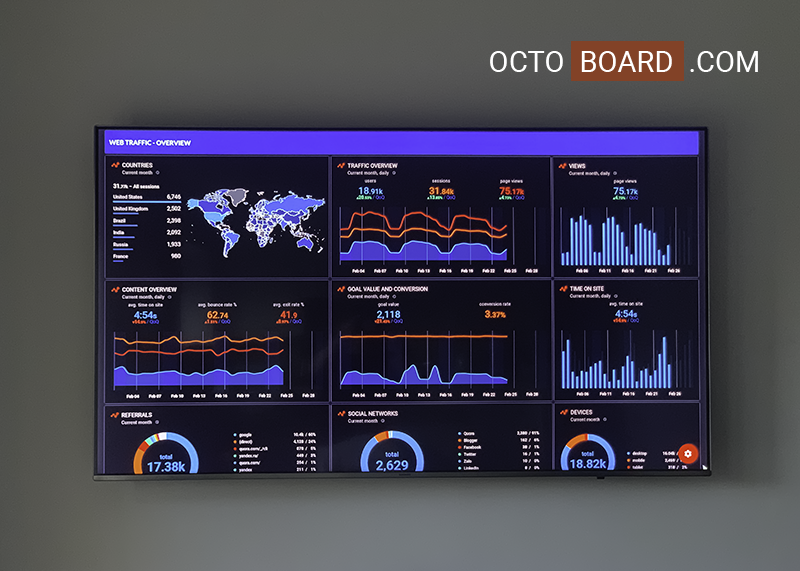
Go to TOP RIGHT menu > MANAGE TV LOOPS...
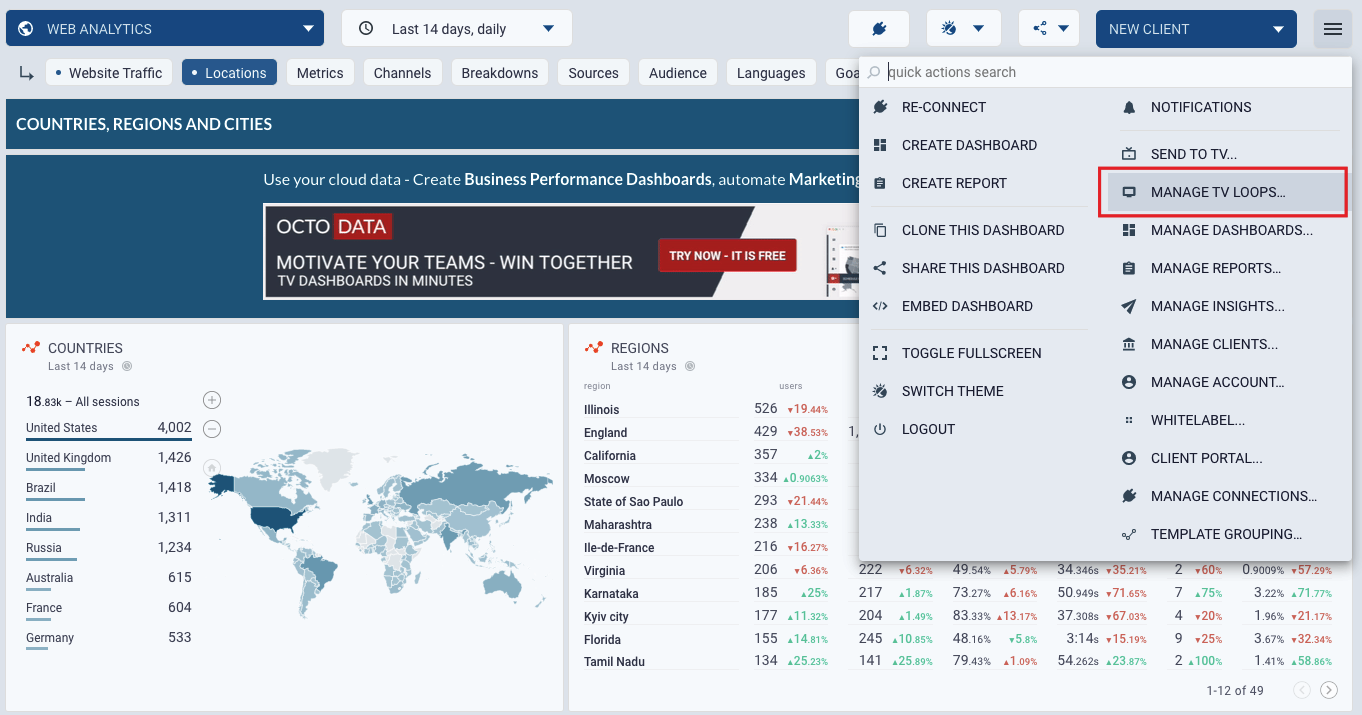
TV Management panel will be displayed. These are the main configuration options:
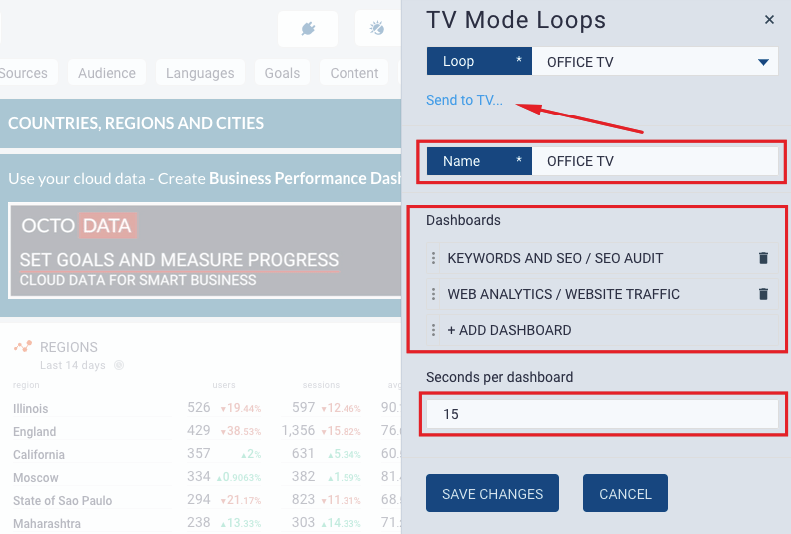
Loop name - new loop name
Dashboards - list of dashboards that make up TV Loop. Add dashboards and define display sequence.
Seconds per dashboards - set delay in seconds for each dashboard display
You can change the sequence of the displayed dashboards by dragging dashboard titles inside the loop. Expect a small delay when you display your TV Loop for the first time. After the initialisation, Octoboard will start using transitions to move from one dashboard to the other as smoothly as possible.
Before you can send your data to an external device, you need to obtain a Device ID. To do so, open a new browser window in your device and proceed to the following URL: TV.OCTOBOARD.COM.
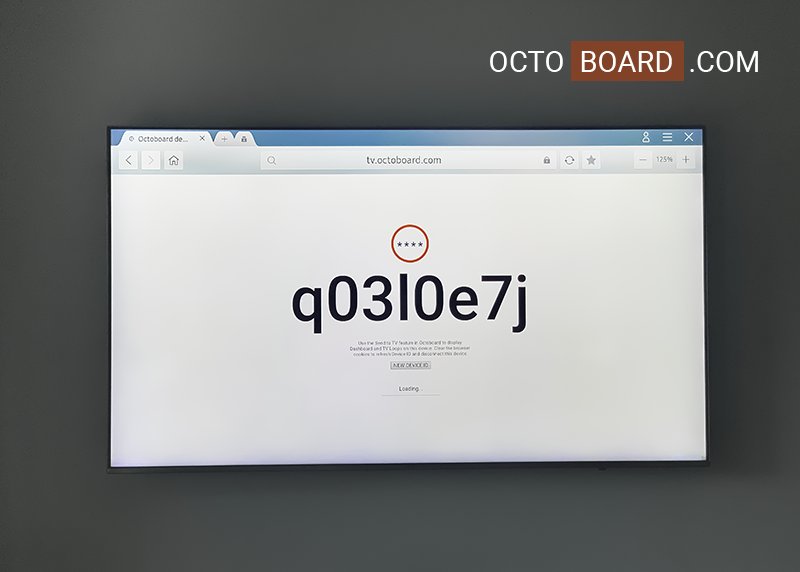
In order to display sequences of dashboards (TV Loops) on an office TV or wall monitor, you need to use SEND TO TV feature in our application. To access device management go to TOP-RIGHT MENU and click SEND TO TV. You will be presented with the following screen:
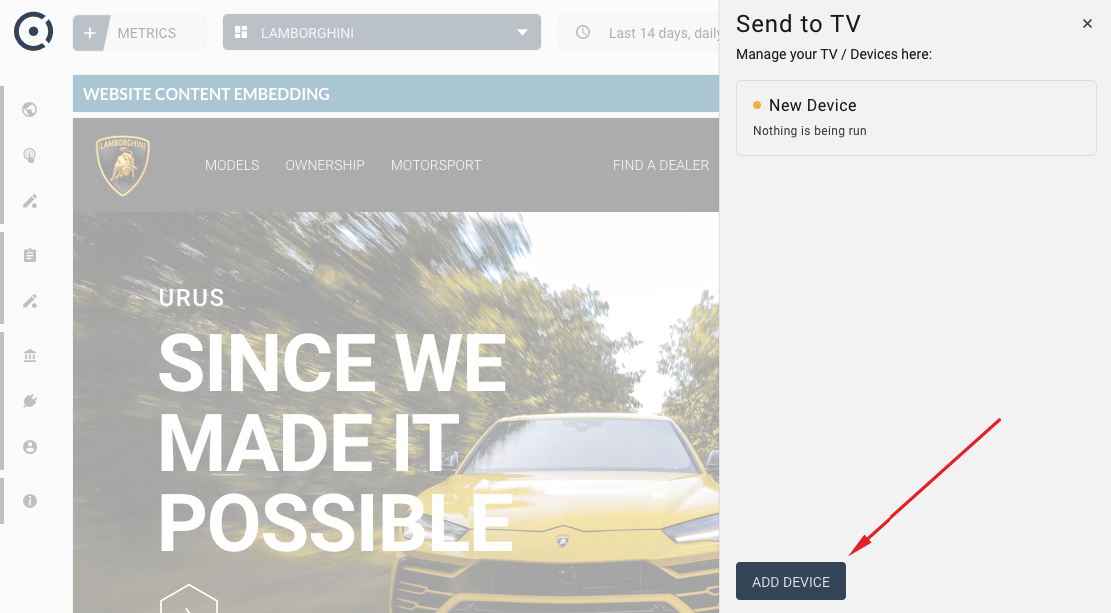
In this screen you can define one or more devices that you want to use to display Octoboard TV Loops or dashboards. During trial and in any paid account you have one device that you can send data to. You can purchase additional devices for your office or home by contacting Octoboard support. Extra device costs €15 per month (with 20% discount if purchased with an annual plan).
Click "Add Device" button to bring the configuration screen. You will see the following configuration options:
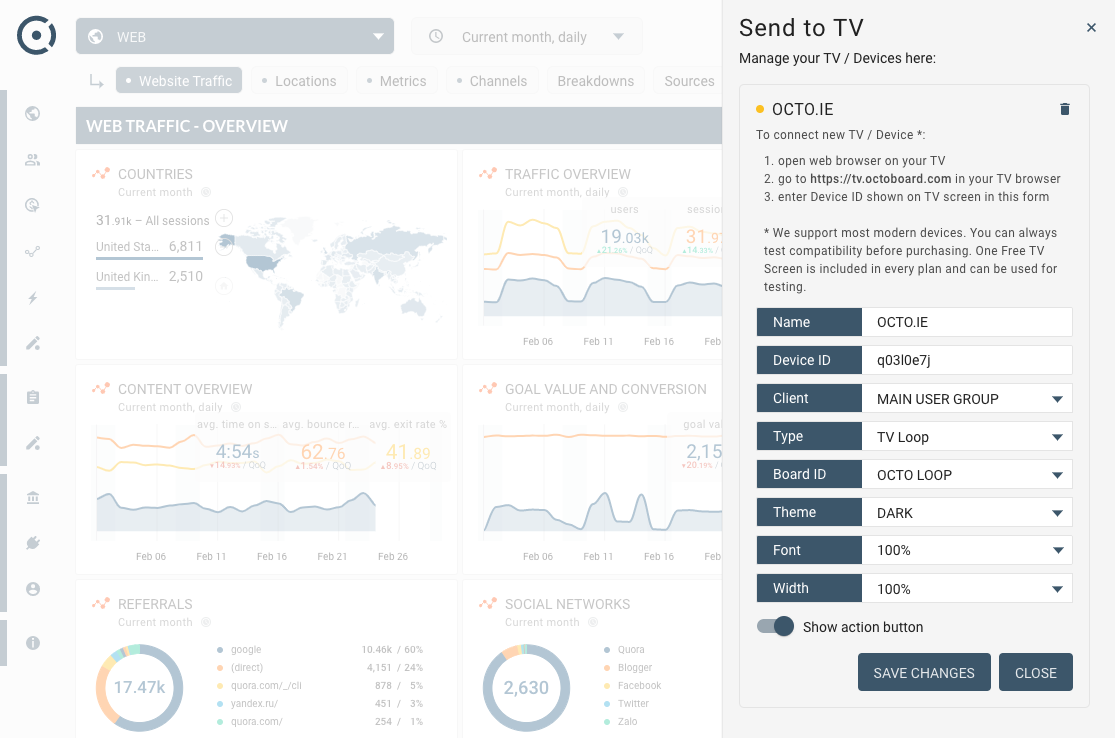
Device name - custom device name that you can use to identify this device in the future.
Device ID - mandatory device ID that you retrieve by accessing tv.octoboard.com from your device.
Client - any device can run loops or dashboards that are visible within one organisation. You need to select that organisation (team or client) here.
Type - you can display TV Loop or a dashboard on your device. Select what you would like to display here.
Board ID - identifier of your TV Loop or dashboards for display.
Theme - select any of the available colour themes here. Once changed, device (TV or monitor) will update the theme of the displayed data automatically. For more information on colour palettes and theme management, check out this Knowledge Base post: Themes and Colour Palettes in Octoboard.
Font - you can make fonts of the displayed widget bigger or smaller. If your TV is located too high, you may want to make fonts bigger.
Width - this dropdown controls how much of the TV horizontal space you would like to use. By default 100% width is selected.
Show action button - tell TV do display or hide the BIG RED button in the corner of the TV screen. The button can be used to maximize displayed data view.
To check if your device is capable of running Octoboard dashboards, please read the following Knowledge Base post: Is my TV compatible with Octoboard?
Once you have setup a TV Loop and directed it to an external device, Octoboard will start sending data. Dashboards will load in sequence and will be rotating after a short delay. Octoboard will be updating data when it becomes available from the cloud platforms. Please note that some platforms may not provide data very frequently or may introduce a data lag (data will become available to Octoboard after some delay).
For more information about sharing data in Octoboard, please read our tutorial Sharing data with clients and internal teams.
For information on how often data is refreshed and updated, please read our Knowledge Base post on Data update frequency in Octoboard.